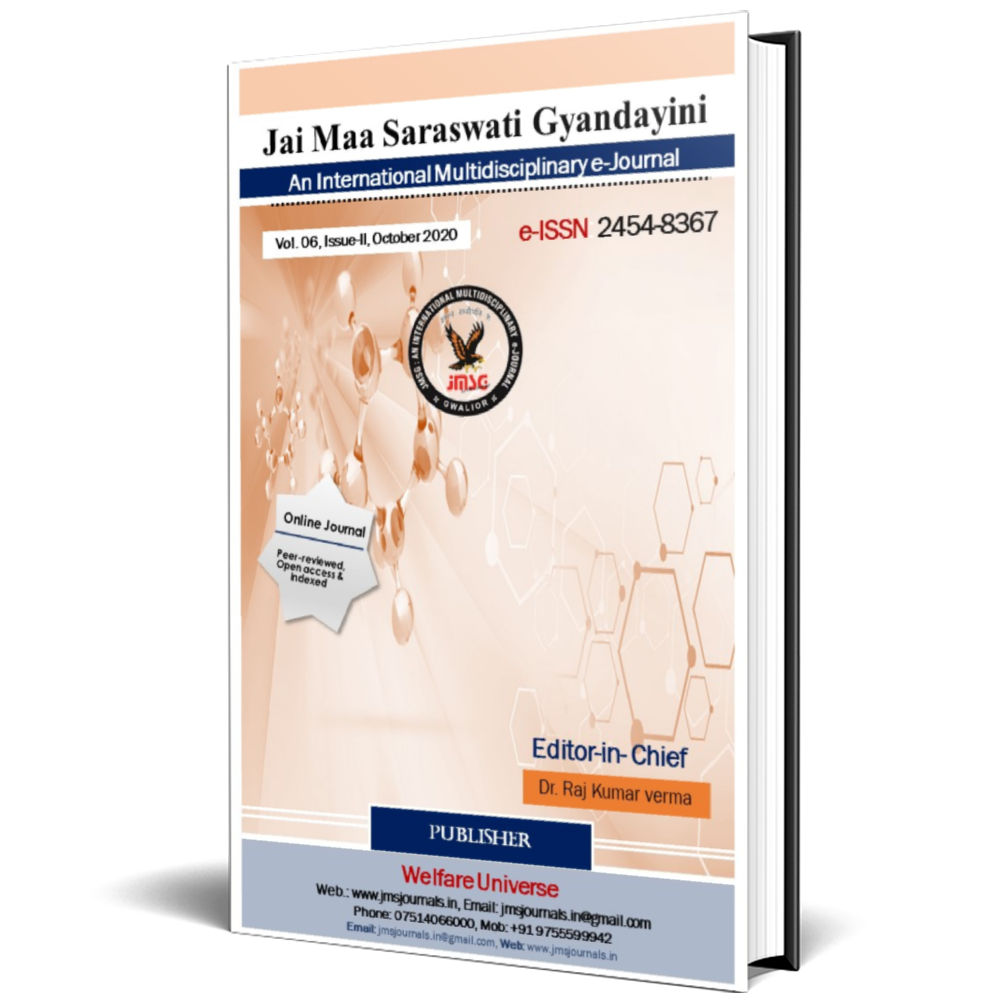Introduction and Archaeological Evidence of Pala Dynasty: A Critical Study
Pal Rajvansh ka Parichay Tatha Puratatvik Sakshya: Ek Samikshatamak Adhdhyan
DOI:
https://doi.org/10.53724/jmsg/v6n2.09Keywords:
Pala Dynasty, Historical Evidence or Archaeological Evidence, Archaeological Sources, Copper Inscriptions and Coin Inscriptions, Culture and Civilization DevelopmentAbstract
Historical evidence or archaeological evidence leads to the pages of history, which depict the past events as a living existence. Historians evaluate the evidence obtained from all these sources and draw conclusions in the same way as scientists draw in the laboratory. There are many sources of knowing history from the chronological order, such as non-historical texts, description of foreign travelers and archaeological evidence etc. In all these sources, archaeological evidence can be considered the most authentic. Archaeological evidence such as idols, copper plates, seals and coins etc. not only gives information about that period, but we also get to know about the social, economic, religious etc. of the entire civilization of that period. We get an example of this in the form of the Indus Valley Civilization. In this way we can say that archaeological sources have special importance for the detailed information of history. Copper plates, inscriptions and inscriptions etc. come under this. Records have their own special importance in all these materials of history. These were written from time to time by many kings in their own way. Although the number of inscriptions are many, but no inscription is before Ashoka. We get most of the information about great rulers like Ashoka and Samudragupta from their records only. Through this research paper, it is an introduction to the Pala dynasty and a critical study of the archaeological evidence.
Metrics
References
Matsyanyayampohitu Prakrutibhirlakshbhaya: Idam Ahitah.
Shri Gopal Iti Kshitish Shirsan Chudamanistasutah. Volume 4, Verse 4, Page 248
Dr. Baldev Tarnath also does the state of fisheries justice. Ed 0, Volume 4, Page 366
Shailendra Nath Sen (1999), Ancient India and Civilization, New Age International.
rc Majumdar (1997), Ancient India, Motilal Banarsi Das
Bhargava, Piyush (1996), Buddhism and Buddhist Art during the Pala Rule, Lucknow: Bharat Book Centre.
Pandey: Govindchandra (1975), History of the Development of Buddhism, Lucknow: Hindi Samiti, India.
Mr. Havaldar Tripathi 'Sahridaya' (1960), Buddhism and Bihar, Bihar Rashtrabhasha Parishad, Patna.
Dr. Vishudhanand Pathak (1973), Political History of North India, Indian Universities, Allahabad.
Downloads
Published
How to Cite
Issue
Section
ARK
License

This work is licensed under a Creative Commons Attribution-NonCommercial 4.0 International License.













